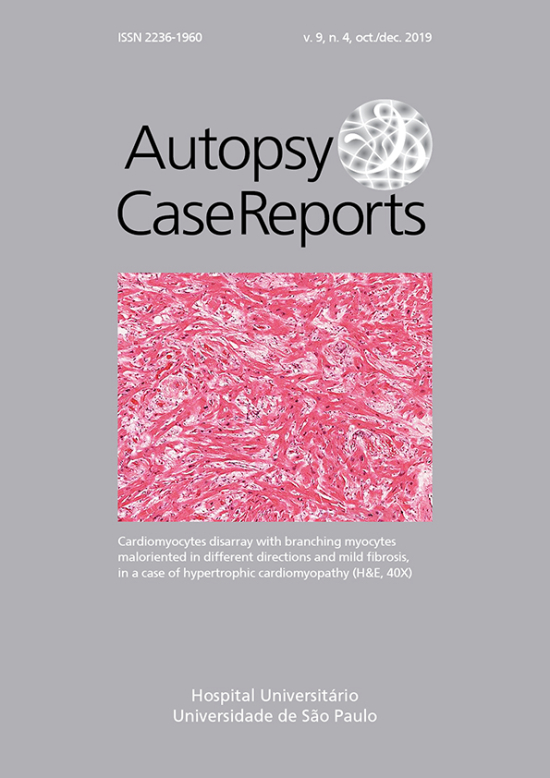Prenatal presentation of a rare genetic disorder: a clinical, autopsy and molecular correlation
DOI:
https://doi.org/10.4322/acr.2019.124Keywords:
Congenital Disorder of Glycosylation, Walker-Warburg Syndrome, HydrocephalusAbstract
Walker Warburg syndrome (WWS) lies at the severe end of the spectrum of the congenital muscular dystrophies. WWS is a congenital disorder of the O-glycosylation that disrupts in the post-translation modification of dystroglycan proteins. WWS is characterized by the involvement of the central nervous system and rarely by multisystem involvement. Next-generation sequencing discovered that multiple genes are associated with this disorder. FKTN is the rarest cause of WWS. We describe a clinical-autopsy report of a molecularly- confirmed WWS case presenting with ventriculomegaly, agenesis of the corpus callosum with a novel phenotype of Dandy-Walker malformation and unilateral multi-cystic kidney. The whole-exome sequencing confirmed a homozygous variant (c.411C>A) in the FKTN gene with a premature termination codon. This case emphasizes the importance of detailed postnatal phenotyping through an autopsy in any pregnancy with antenatally identified malformations. Obstetricians, pediatricians as well as fetal medicine experts need to counsel the parents and focus on preserving the appropriate sample for genetic testing. WWS, though rare deserves testing especially in the presence of positive family history. Dandy-Walker malformation is a novel feature and expands the phenotypic spectrum.
Downloads
Published
Issue
Section
License
Copyright
Authors of articles published by Autopsy and Case Report retain the copyright of their work without restrictions, licensing it under the Creative Commons Attribution License - CC-BY, which allows articles to be re-used and re-distributed without restriction, as long as the original work is correctly cited.



